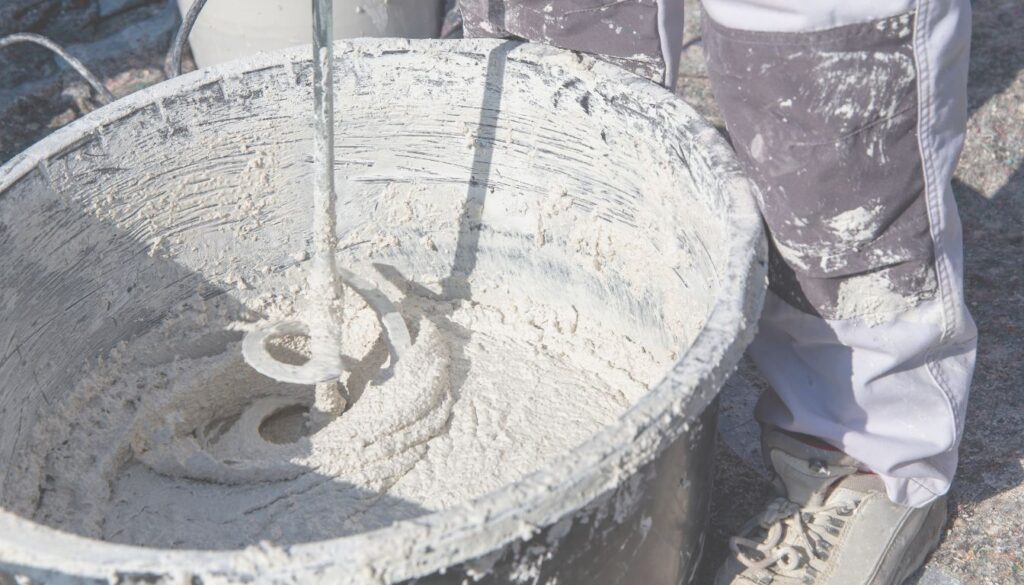The Ultimate Guide to Properly Mixing Plaster
Ever wondered why some walls have a flawless finish while others appear patchy and uneven? The secret often lies in the consistency of the plaster used. Achieving the perfect mix is not just about following steps; it’s about understanding the science behind it. Whether you’re a DIY enthusiast or a professional, mastering this skill can make all the difference. One common mistake is adding water to plaster instead of the other way around. This can lead to lumps and an uneven texture. Experts recommend starting with water and gradually adding plaster to achieve a smooth, creamy consistency. This method ensures a flawless finish and makes the application process much easier1. Proper mixing is not just about technique; it’s also about timing. Plaster has a limited working time, typically between 5 to 45 minutes, depending on the type. Mixing too quickly or too slowly can affect the final result. By following these tips, you can avoid common pitfalls and achieve professional-quality results every time2. If you have any further questions, feel free to reach out to Kent Plasterers. We’re here to help you every step of the way. Key Takeaways Start with water and add plaster gradually to avoid lumps. Achieve a smooth, creamy consistency for the best results. Mixing time and technique are crucial for a flawless finish. Plaster has a limited working time, so plan accordingly. Contact Kent Plasterers for expert advice and assistance. Preparing Your Materials and Work Area Proper preparation is the cornerstone of any successful plastering project. Before you begin, it’s essential to gather all the necessary tools and ingredients. This ensures a smooth workflow and minimises disruptions during the process. Gathering the Essential Tools and Ingredients Start by selecting a clean, sturdy bucket of sufficient size, ideally between 5 to 7 gallons. This allows for proper mixing and reduces splatter. Ensure you have fresh, cool water ready, as contaminated water can affect the plaster’s setting time3. Measure the correct amount of plaster from the bag to avoid wastage. For instance, beginners should use around half a bag to practice before it sets3. Having all tools, such as a mixing paddle, drop cloths, and painter’s tape, at hand saves time and effort. Setting Up a Safe and Organised Workspace Safety and organisation are paramount. Clear the work area of obstacles and lay down protective sheeting to keep surfaces clean. A well-ventilated space is crucial, especially when working indoors. Use painter’s tape to secure drop cloths and protect edges. For example, external angle beads help in tight corners, while stop beads control plaster application on edges4. An organised workspace not only enhances efficiency but also ensures a smoother finish. Tool Purpose Mixing Bucket Ensures proper consistency and reduces splatter Drop Cloths Protects surfaces from spills and splashes Painter’s Tape Secures protective sheeting and edges Mixing Paddle Helps achieve a lump-free mixture Remember, thorough preparation sets the foundation for a successful plastering job. If you need further clarification, feel free to contact us at Kent Plasterers. We’re here to guide you every step of the way. Mastering How Mix Plaster: Step-by-Step Process Achieving a professional finish with plaster requires precision and attention to detail. The process involves several critical steps, from preparing the mixture to ensuring the right consistency. By following these guidelines, you can elevate your plastering results to a professional standard. Adding Water and Plaster in the Correct Order Start by pouring fresh water into a clean bucket. This is the first step to ensure a smooth mixture. Gradually add plaster to the water, allowing it to soak and bubble without forming lumps. This method prevents uneven textures and makes the job easier5. Use a drill with a paddle mixer on low speed to combine the materials. Swirl the paddle in both directions and lift it occasionally to mix every bit thoroughly. This technique ensures a lump-free consistency, which is essential for a flawless finish6. Mixing Techniques for the Perfect Consistency Once the initial mixture reaches a smooth texture, add further plaster gradually. Scrape the sides of the bucket to incorporate any adhered material. This step ensures that every bit of plaster is evenly mixed7. The ideal consistency should resemble thick yogurt or peanut butter. This balance ensures the plaster is easy to apply and dries evenly. Timing is crucial; the mixing process should last a specific number of minutes to avoid premature setting5. Adjusting Ratios and Timing for Best Results Adjust the ratio of water to plaster to fine-tune the mixture’s consistency. A typical ratio ranges from 3:1 to 4:1, depending on the manufacturer’s guidelines5. This adjustment ensures the plaster is neither too thick nor too thin. Remember, the working time for mixed plaster is generally between 30 to 60 minutes. Plan your application accordingly to avoid wastage and ensure a smooth finish5. Step Key Action 1 Pour fresh water into a clean bucket 2 Add plaster gradually while mixing 3 Use a drill with a paddle mixer for even consistency 4 Adjust water-to-plaster ratio as needed 5 Scrape bucket sides to incorporate all material Should you have any queries regarding the steps, do not hesitate to contact us at Kent Plasterers. We’re here to guide you every step of the way. Troubleshooting and Expert Tips Even the most experienced plasterers can encounter challenges during the process, but knowing how to troubleshoot can save time and materials. From lumps in the mixture to premature setting, we’ll guide you through common issues and their solutions. Avoiding Common Mistakes and Ensuring Smooth Application One frequent error is using water at the wrong temperature. Cold water can slow down the setting time, while hot water may cause premature hardening. Always use fresh, cool water for the best results8. Another issue is lumps in the plaster mix. To avoid this, add the plaster gradually to the water and use a drill-mounted paddle mixer. This ensures a smooth, lump-free consistency9. Make sure to monitor the plaster water ratio closely. An incorrect ratio can lead to a mix that’s either
The Ultimate Guide to Properly Mixing Plaster Read More »

